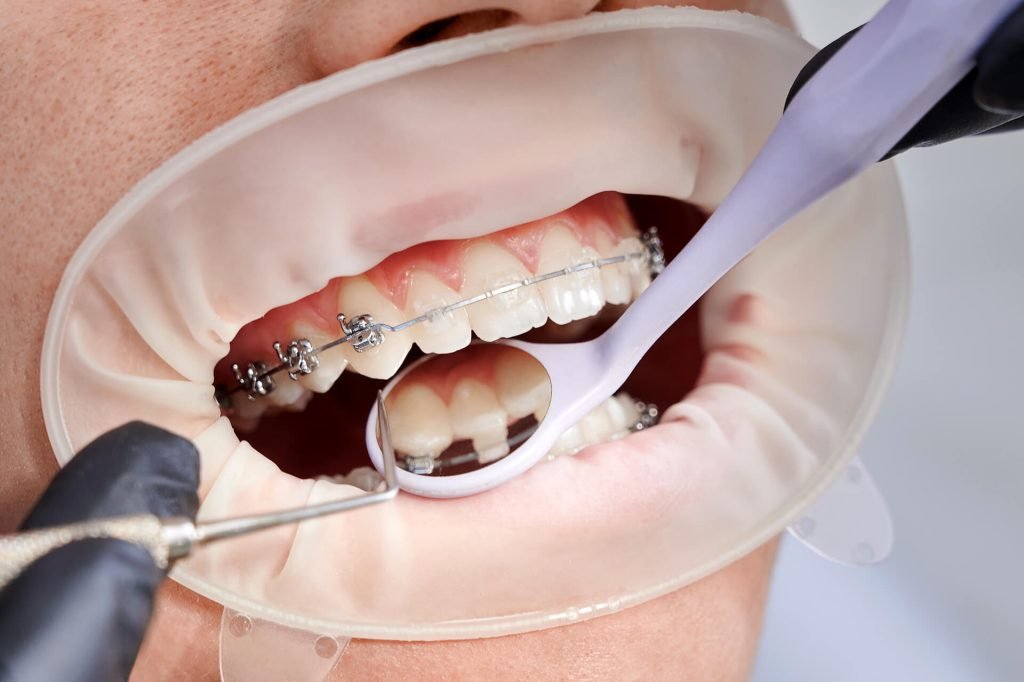Understanding Malocclusion (“Sungki”) : Types, Causes, and Treatment Options

Malocclusion, a common dental condition, refers to misalignment of the teeth or incorrect relationship between the upper and lower jaws. This condition can significantly impact oral health and overall well-being, underscoring the importance of understanding its various aspects. Types of Malocclusion Malocclusion manifests in different forms, each characterized by specific dental misalignments. These include overbite, where the upper front teeth excessively overlap the lower front teeth, underbite, where the lower teeth protrude beyond the upper teeth, crossbite, where the upper teeth sit inside the lower teeth when biting, and open bite, where some teeth fail to make contact when biting down. Causes of Malocclusion Malocclusion can stem from various factors, including genetic predisposition, abnormal jaw development, childhood habits like thumb sucking or tongue thrusting, and facial trauma. These factors can disrupt the normal alignment of teeth and contribute to malocclusion. Effects of Malocclusion Malocclusion can have detrimental effects on oral health and functionality. Difficulty chewing food properly, speech impediments, and an increased risk of dental issues such as tooth decay and gum disease are common consequences of untreated malocclusion. Diagnosis and Treatment Diagnosing malocclusion typically involves a comprehensive dental examination, X-rays, and impressions of the teeth. Treatment options vary depending on the severity and type of malocclusion but may include braces, clear aligners, jaw surgery, or orthodontic appliances to gradually shift the teeth into proper alignment. Prevention and Maintenance Preventing malocclusion involves early intervention, such as orthodontic treatment during childhood, and avoiding habits that can contribute to misalignment. Additionally, maintaining good oral hygiene practices and attending regular dental check-ups are essential for preventing and managing malocclusion. Conclusion Malocclusion is a common dental condition with various types, causes, and treatment options. Understanding the nuances of malocclusion and addressing it promptly through appropriate treatment can significantly improve oral health and overall quality of life. Regular dental care and early intervention are crucial in preventing complications associated with malocclusion, ensuring a healthy and properly aligned smile.
Deciphering the Mechanics: How Do Dental Braces Work?

Dental braces, a staple of orthodontic treatment, offer a transformative journey toward a straighter smile. But how exactly do these orthodontic devices achieve such remarkable results? Understanding the mechanics behind braces sheds light on their efficacy in correcting misalignments and improving oral health. At the heart of braces lie several key components meticulously engineered to exert controlled pressure on the teeth. These components work in tandem, gradually coaxing the teeth into their optimal positions. The fundamental elements of braces include brackets, archwires, bands, and sometimes additional attachments like springs or rubber bands. Brackets are affixed to the front surface of each tooth using dental adhesive, serving as anchors for the rest of the apparatus. Archwires, slender and flexible, thread through the brackets, applying gentle but persistent pressure on the teeth. This pressure initiates a biological response in the surrounding bone tissue, prompting it to remodel and accommodate the shifting teeth. Supporting the structure are bands, metal rings secured around the molars to provide stability and support. Additionally, supplementary components like springs or rubber bands may be employed to apply targeted force, addressing specific alignment issues or correcting bite discrepancies. The mechanism of tooth movement is gradual and methodical. Over time, the sustained pressure from the braces prompts the teeth to migrate toward their desired positions. As teeth shift, the bone undergoes remodeling to maintain support and stability, ensuring lasting results. Regular adjustments by an orthodontist are integral to the braces treatment process. These adjustments fine-tune the pressure applied by the braces, guiding teeth along their predetermined trajectory toward alignment perfection. In essence, dental braces work by harnessing the power of controlled pressure to orchestrate a symphony of tooth movement. Through this orchestrated dance, braces sculpt smiles, instilling confidence and promoting optimal oral health for a lifetime.

